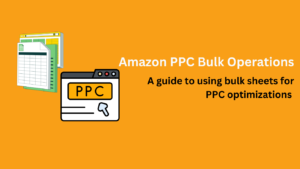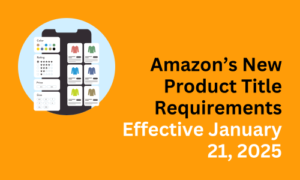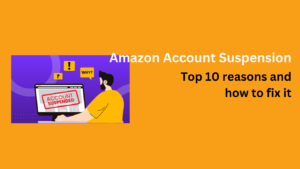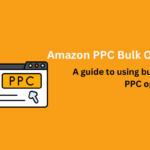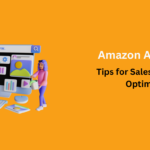In the crowded marketplace of Amazon, Amazon competitor research is essential for brands aiming to stay ahead. With millions of sellers competing for customer attention, understanding your competitors’ strategies is critical for improving your product offerings, optimizing your Amazon listings, and developing a winning pricing strategy.
This comprehensive guide will walk you through how to conduct Amazon competitor analysis, why it’s crucial for your business, and the best competitor analysis tools for Amazon to help you track your competition effectively. Armed with the right data and insights, you’ll be able to refine your Amazon product research, identify market opportunities, and ultimately scale your brand.
Why Amazon Competitor Research Matters
Conducting competitor research goes beyond simply looking at what other sellers are doing—it’s about uncovering actionable insights to strengthen your business. Here’s why it matters:
Identify Market Gaps
By analyzing competitors, you can find market opportunities that are often overlooked. Whether it’s improving product features or targeting new customer segments, competitor insights help you stay ahead.Improve Amazon Listings
Well-optimized Amazon product listings drive traffic and conversions. Studying how top competitors structure their titles, keywords, images, and descriptions will help you fine-tune your own listings.Refine Your Pricing Strategy
Pricing can make or break your success. Analyzing competitor pricing data using tools like Jungle Scout Cobalt or AMZScout enables you to develop a dynamic Amazon pricing strategy that balances competitiveness and profitability.Track Customer Feedback
Amazon reviews offer valuable insights into what customers love and dislike about your competitors’ products. This information can guide product improvements and help differentiate your brand.Monitor Sales Trends
Understanding competitor sales trends allows you to forecast demand, adjust your inventory, and capitalize on seasonal opportunities.
How to Conduct Amazon Competitor Analysis
1. Identify Your Competitors
Start by identifying your key competitors. Search for your main keywords on Amazon and note which brands dominate the top search results. These are your direct competitors.
2. Analyze Product Listings
Take a deep dive into your competitors’ listings and examine these elements:
- Titles and Keywords: Are they using high-ranking Amazon keywords?
- Bullet Points: What product benefits do they emphasize?
- Images and Videos: High-quality visuals are key to conversions.
- A+ Content: Check how competitors leverage enhanced content to boost their brand image and explain product features.
3. Monitor Pricing and Promotions
Pricing directly affects your visibility and conversions. Track your competitors’ pricing and promotional strategies to stay competitive without sacrificing margins. Tools like Jungle Scout’s Cobalt and Helium 10 offer valuable insights into Amazon sales tracking and price fluctuations over time.
4. Keyword Research and SEO
One of the most critical aspects of doing competitor research is understanding which keywords your competitors rank for. Use tools like Helium 10 and AMZScout to find high-ranking keywords and incorporate them into your strategy.
5. Study Customer Reviews
Customer feedback is an often-underutilized goldmine of data. Analyze competitor reviews to discover product weaknesses, common complaints, and opportunities for improvement.
6. Monitor Sales Performance
Tracking competitor sales volume provides insights into market demand and seasonality. Tools like Jungle Scout help estimate competitor sales data, giving you a clearer picture of what’s working in your category.
Top Tools for Amazon Competitor Research
Here are some of the best competitor analysis tools for Amazon that can give you an edge:
Jungle Scout Cobalt
A powerful tool for market intelligence and Amazon sales tracking, Cobalt offers advanced data on competitor pricing, sales trends, and keyword performance.Helium 10
Known as an all-in-one Amazon seller solution, Helium 10 offers robust features for Amazon keyword research, product tracking, and listing optimization.AMZScout
AMZScout helps with Amazon product research, offering accurate sales estimates and competitive pricing data through its Chrome extension.Trellis
Trellis focuses on performance tracking and Amazon competitor analysis, providing sellers with actionable data to optimize their strategy.
Common Mistakes to Avoid in Amazon Competitor Research
Even experienced sellers can make mistakes during competitor analysis. Here are some of the most common pitfalls and how to avoid them:
1. Relying on Outdated Data
Market trends on Amazon change rapidly. Relying on outdated data can lead to poor decisions. Use real-time data from tools like Jungle Scout Cobalt or Helium 10 to ensure you’re making decisions based on current market conditions.
2. Overlooking Customer Sentiment
While many sellers focus on sales data and keywords, they often neglect customer sentiment. Analyzing reviews for recurring complaints and customer expectations can offer insights that raw data cannot provide.
3. Ignoring Indirect Competitors
Many sellers focus solely on their direct competitors, but ignoring indirect competitors can be a costly mistake. For example, if you sell premium water bottles, tracking budget brands can reveal insights into customer preferences and pricing trends.
4. Failing to Monitor Competitor Ads
Competitor advertising strategies provide valuable clues. Analyze their Amazon Sponsored Ads to see which keywords they’re targeting and how they position their products.
5. Not Adjusting Strategies Regularly
Amazon is a dynamic marketplace, and a strategy that worked six months ago may no longer be relevant. Regularly revisit your competitor research to stay updated on changes in the market.
Steps to Gain a Competitive Edge on Amazon
- Benchmark Your Performance
Compare your product performance with competitors. This includes tracking sales, pricing, and customer satisfaction. Optimize Your Product Offering
Use competitor insights to improve your product features, packaging, or customer experience.Refine Your Amazon Advertising Strategy
Study your competitors’ Sponsored Ads campaigns and adopt successful strategies. Track which keywords they bid on and identify gaps you can fill.Monitor Regularly
Amazon competitor research is not a one-time task. Regular monitoring ensures that you stay updated with market changes and maintain your competitive advantage.
How Active Seller Hub Can Help You Stay Ahead
At Active Seller Hub, we specialize in helping Amazon sellers analyze competitors and translate insights into actionable strategies. With expert guidance from ex-Amazonians, we simplify the Amazon competitor research process. From Amazon listing optimization to sales tracking and keyword research, our team ensures you have the tools and strategies you need to succeed.
Final Thoughts
Amazon competitor research is an ongoing process that can significantly impact your success. By regularly analyzing competitors, you’ll gain the insights needed to stay ahead of market trends, improve your products, and refine your marketing strategy.
The goal is not just to replicate what competitors are doing but to learn from their successes and failures to create a strategy that sets you apart. With the right approach and tools like Jungle Scout, Helium 10, and AMZScout, you can build a scalable business and achieve long-term growth.



